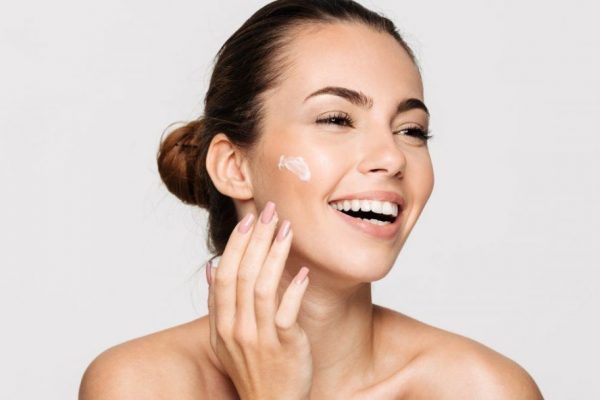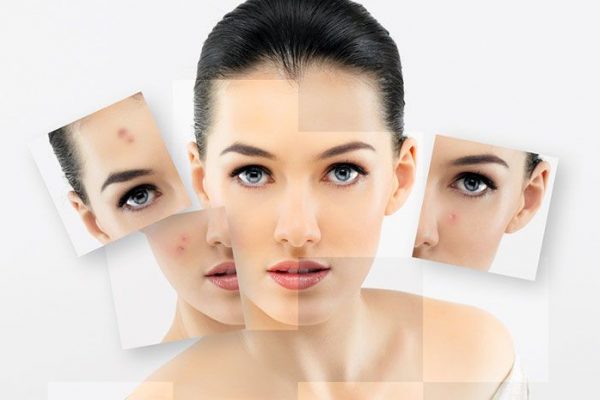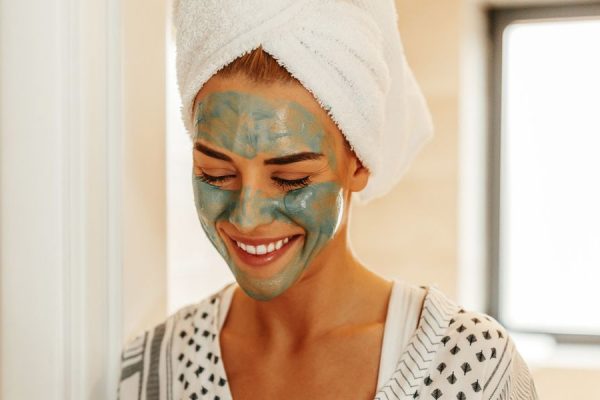It is one of the queries that you ask us the most at this time of year, we expose ourselves more to the sun and we are worried that we will get spots or that the ones we already have will worsen. Unfortunately, summer is not the best time to deal with them in-depth, we can only try to protect ourselves from their appearance and keep existing ones at bay until we can tackle them more “aggressively” in autumn-winter. And for this, we give you some keys below.
What is melasma and why does it appear?
Melasma is a skin pathology characterised by the appearance of dark and irregular spots, generally brown, and with a bilateral and symmetrical distribution, which occurs in areas more exposed to the sun such as the face, neckline, hands, and forearms…
Causes :
- Sun exposure (ultraviolet radiation is the main trigger).
- Hormonal factors (taking contraceptives, pregnancy, thyroid activity…)
- genetic predisposition.
- Photosensitizing drugs.
- Some cosmetics (phototoxic reactions).
Types :
- Epidermal (light brown spots): Melanin deposition in the basal and suprabasal layers of the epidermis.
- Dermal (bluish-grey spots): Melanin-rich macrophages in the superficial and middle dermis.
- Mixed (dark brown spots): Melanin deposits are found in the epidermis and dermis.
- What can I do to treat the spots on my skin?
Melasma treatment is long and slow, and there is a high recurrence rate, especially in summer. The general goal of melasma treatment is to lighten the intensity of hyperpigmentation and reduce the extent of the affected area.
Now, before commenting on the different treatments, it is important to emphasise that none will be effective without good PHOTOPROTECTION, we must use a broad-spectrum sunscreen (UVB and UVA) daily, throughout the year and appropriately, that is, use a minimum SPF of 30, but the necessary amount and reapply every 2 hours. If you are not going to do this, do not bother or spend money on depigmenting treatments and cosmetics.
There are two types of depigmentation treatments, those carried out by professionals in the cabin (physical therapies) and cosmetic treatment at home:
1. Cabin therapies
These treatments should always be combined with cosmetic treatment and are not recommended in times of increased sun exposure.
Lasers :
- Nd Yag Q-Switched Laser
- fractional laser
- Intense Pulsed Light (IPL)
Chemical peels: different acids are used (glycolic, salicylic, tranexamic, TCA, mandelic, lactic, phytic…) at different concentrations and different combinations of these, depending on the depth of the lesions to be treated. Some, the deepest, require recovery time.
2. Cosmetic treatment.
There are many topical depigmenting active ingredients on the market, and they can be presented alone or combined in the formulations of different serums or creams, here we are talking about some of them:
- Hydroquinone at 2 or 4%: this active ingredient is effective in the case of melasma. It is prescribed by a doctor and is made as a master formulation in pharmacies. In this formula, hydroquinone is usually accompanied by retinoic acid and some corticosteroids that help and add to the depigmenting effect. On the other hand, it is not uncommon for it to cause irritation and should not be used for a long time.
- Azelaic Acid: 20% of this active ingredient is equivalent to 4% of Hydroquinone in the treatment of melasma, but without its side effects, it also has antibacterial, comedolytic and anti-inflammatory action, making it ideal for treating post-inflammatory pigmentation, acne and rosacea.
- Kojic Acid: effective and with few side effects. We do not usually find it only in depigmenting formulations, but associated with other active ingredients.
- Arbutin: This substance comes from hydroquinone but is less irritating, so it can be used on sensitive skin with very good results. It is used in concentrations between 1 and 4%.
- Ascorbic Acid or Vitamin C: in addition to stimulating collagen synthesis, vitamin C is a powerful antioxidant that acts by neutralising free radicals generated by sun exposure, thus preventing photoaging and avoiding hyperpigmentation. That’s right, Vitamin C DOES NOT STAIN!! Remove the contrary.
- Niacinamide: Niacinamide is the active form of Vitamin B3 and, among its many properties, has a depigmenting and illuminating action. In addition, this active ingredient has anti-inflammatory action and reinforces the skin barrier by regulating its hydro-lipid balance, which is why it is also of interest in cases of acne and rosacea.
- Alpha hydroxy acids (AHA ): glycolic, malic, lactic, citric…. All of them stimulate epidermal renewal and help eliminate melanin stored in keratinocytes. Glycolic acid between 5-10% facilitates the penetration of other depigmenting active ingredients.
- Retinol and derivatives: this ingredient is the king of cosmetics, one of the most studied and one of the most effective when it comes to treating skin ageing. A powerful depigmenting agent that acts by modulating the activity of melanocytes.
- Tranexamic acid: effective in concentrations of 2-5% and, even more so, when combined with niacinamide or azelaic acid.
Other active ingredients: ellagic acid, phytic acid, mandelic acid, salicylic acid, alpha-lipoic acid, resorcinol…
As you can see, there is a wide variety of treatments, lasers, peels… and now, if we talk about anti-blemish cosmetics, it is easy to get lost, so my recommendation is, always, that you go to a centre with trained professionals who advise you and choose the right treatment for you. treatment and cosmetics in a personalised way since there is no single effective therapy for everyone. To obtain good results, it will be necessary to combine several treatments to address the problem at all levels.




